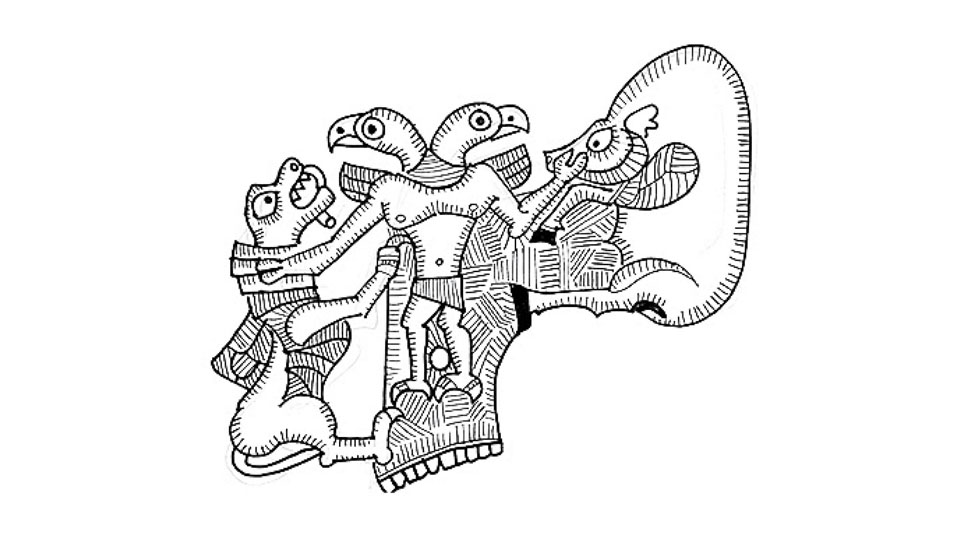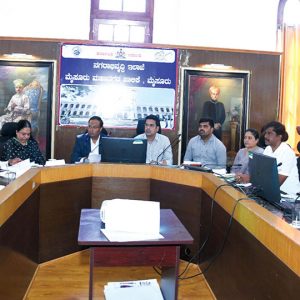By Dr. Devdutt Pattanaik – Author, Speaker, Illustrator, Mythologist
No conversation about Harappans and Aryans is now complete without discussing the Oxus civilisation. Cities of the Oxus civilisation, in what is now Turkmenistan, Uzbekistan, Tajikistan, traded with cities of the Harappan civilisation to their south, until Harappan cities ceased to exist by 1900 BCE. They also had close ties with pastoralists in the north, in what is now South Russia and Kazakhstan, who had successfully domesticated horses and harnessed them to chariots around 2000 BCE. These horse-domesticating Steppe herdsmen eventually moved south, lived in Oxus basin for a few generations, and eventually split into two groups, the Vedic Indians and the Avestan Iranians, collectively known as the Arya! But we know next to nothing about Oxus civilisation as it was discovered only in the 1970s by Russians and the papers were translated and published fully only in the past 20 years.
Oxus civilisation thrived around the Oxus river that drains into the Aral sea. It is known to archaeologists as BMAC or Bactria Margiana Archaeological Complex. It was critical to the Bronze Age Trading Network, because it was the primary source of tin, a metal that turned copper into bronze. Located on the western side of the Hindu Kush mountains, it thrived between 2200 BCE and 1700 BCE. In the first half of its civilisation, the Oxus cities traded with Harappan cities on the eastern side of Hindu Kush. Then, they traded with Eurasian Steppe horsemen who came to their cities via the Inner Asian Mountain Corridor. At Oxus, these horsemen learnt about Soma (Ephedra) that grew on mountains, about fire-rituals, words for bricks, seeds and agriculture, and thus, became the Arya, or noble people. This is why this civilisation is important to understanding Indian pre-history.
Like the Harappans, Oxus had pre-planned rectangular grid cities. But unlike Harappa, these cities show heavy fortifications (three walls with watch towers), a clear power centre like palace-temple complex and extensive burials of elite, middle class and slaves with grave goods. They did not use seals like the Harappans nor cuneiform script like the Mesopotamians, though they traded with both. They did not know the horse, just like the Harappans. They clearly exported tin, and may have imported cotton and sesame oil from Harappans.
Climate change destroyed the Bronze Age trading network and made the Steppe pastoralists move southwards. Their horse was in great demand everywhere — in Egypt, in Syria, in Mesopotamia, in Iran and in India. Horse domestication is what makes the Steppe pastoralists famous. It enabled the spread of these war-like patriarchal people. However, this was not a Mongol-like invasion as was once assumed. The engagement happened slowly over generations involving some trading, some raiding and lots of marriage.
The Steppe Horsemen originally lived north of the Caspian Sea around 3000 BCE. They were not Aryans then. The horse was not ridden then. They bred horses for meat, milk and hide. A thousand years later in 2000 BCE, by the time they moved to the Ural river basin in Southern Russia east of the Ural mountains, they had domesticated the horse. By 1700 BCE, they were interacting with Oxus and had become Arya. Then they split. Men who loved the violent Indra and other gods moved to India, married local women, and composed the Veda. Men who preferred the wise Ahura, and chose monotheism stayed back and eventually migrated to Iran where they composed the Avesta. If your friends passionately talk about Vedic Aryans but are clueless about Oxus civilisation, you should know their knowledge is incomplete.








Recent Comments